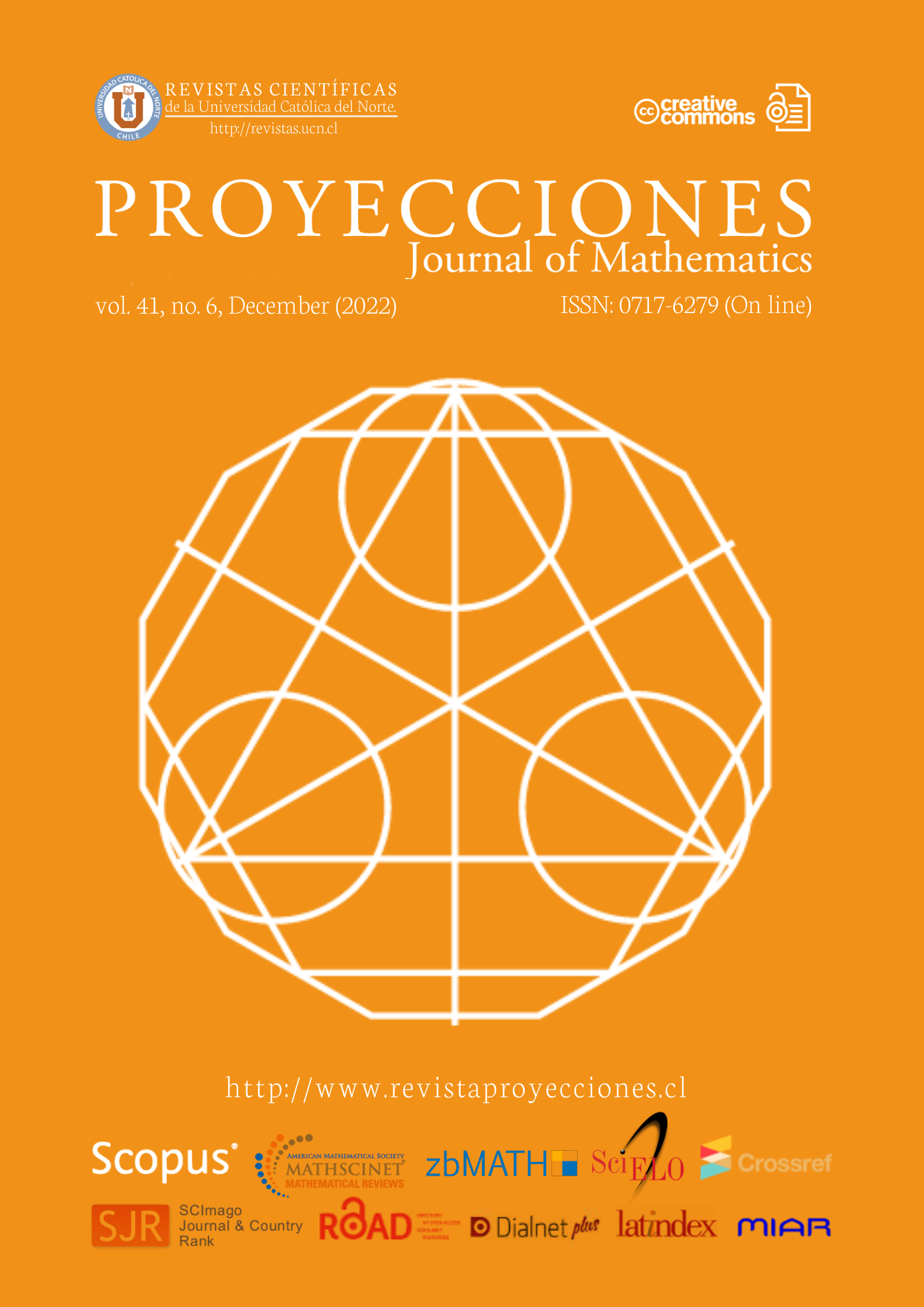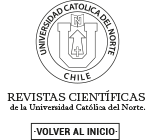Semi-commutativity of graded rings and graded modules
DOI:
https://doi.org/10.22199/issn.0717-6279-4951Keywords:
graded rings, graded modules, semicommutative rings, non-commutative graded rings, graded modules over non-commutative ringsAbstract
A ring R is said to be semi-commutative if whenever a, b ∈ R such that ab = 0, then aRb = 0. In this article, we introduce the concepts of g−semi-commutative rings and g−N−semi-commutative rings and we introduce several results concerning these two concepts. Let R be a G-graded ring and g ∈ supp(R, G). Then R is said to be a g−semi-commutative if whenever a, b ∈ R with ab = 0, then aRgb = 0. Also, R is said to be a g − N−semi-commutative if for any a ∈ R and b ∈ N(R) ⋂ Ann(a), bRg ⊆ Ann(a). We introduce an example of a G-graded ring R which is g − N-semi-commutative for some g ∈ supp(R, G) but R itself is not semi-commutative. Clearly, if R is a g−semi-commutative ring, then R is a g − N−semi-commutative ring, however, we introduce an example showing that the converse is not true in general. Several results and examples are investigated. Also, we introduce the concept of g − NE−semi-commutative rings and we introduce several results concerning g−NE−semi-commutative rings.
Let R be a G-graded ring and g ∈ supp(R, G). Then R is said to be a g−NE− semi-commutative ring if whenever a ∈ N(R) and b ∈ E(R) such that ab = 0, then aRgb = 0. Clearly, g−semi-commutative rings are g −NE−semi-commutative, however, we introduce an example ...
References
R. Abu-Dawwas, K. Al-Zoubi, and M. Bataineh, “Prime submodules of graded modules,” Proyecciones (Antofagasta), vol. 31, no. 4, pp. 355–361, 2012. https://doi.org/10.4067/s0716-09172012000400004
K. Al-Zoubi and R. Abu-Dawwas, “On graded 2-absorbing and weakly graded 2-absorbing submodules”, Journal of Mathematical Sciences: Advances and Applications, vol. 28, pp. 45-60, 2014. [On line]. Available: https://bit.ly/3DtjPIE
M. Baser and N. Agayev, “On reduced and semi-commutative modules”, Turkish Journal of Mathematics, vol. 30, pp. 285-291, 2006. [On line]. Available: https://bit.ly/3UjJcUa
M. Başer and A. Harmanci, “Reduced and p.q.-baer modules”, Taiwanese Journal of Mathematics, vol. 11, no. 1, 2007. https://doi.org/10.11650/twjm/1500404651
A.M. Buhphang and M.B. Rege, “Semi-commutative modules and Armendariz modules”, Arab Journal of Mathematical Society, vol. 8, pp. 53-65, 2002. [On line]. Available: https://bit.ly/3FLerUk
A.M. Buhphang, S. Halicioglu, A. Harmanci, K. Hera Singh, H.Y. Kose and M.B. Rege, “On rigid modules”, East-West Journal of Mathematics, vol. 15, no. 1, pp. 71-85, 2013. [On line]. Available: https://bit.ly/3DZeaeU
H. Y. Chen, “A note on potent elements”, Kyungpook Mathematical Journal, vol. 45, pp. 519-526, 2005. [On line]. Available: https://bit.ly/3sY9y2l
P. M. Cohn, “Reversible Rings”, Bulletin of London Mathematical Society, vol. 31, no. 6, pp. 641-648, 1999. https://doi.org/10.1112/s0024609399006116
M. Cohen and L. Rowen, “Group graded rings”, Communications in Algebra, vol. 11, pp. 1253-1270, 1983.
M. P. Drazin, “Rings with central idempotent or nilpotent elements”, Proceedings of the Edinburgh Mathematical Society, vol. 9, no. 4, pp. 157–165, 1958. https://doi.org/10.1017/s001309150001405x
K. R. Goodearl, Von Neumann regular rings. London: Pitman, 1979.
T. K. Lee and Y. Zhou, “Reduced modules”, in Rings, modules, algebras and abelian groups, A. Facchini, E. Houston, and L. Salce, Eds. New York: Dekker, 2004, pp. 365-377.
R. Mohammadi, A. Moussavi and M. Zahiri, “On nil-semicommutative rings”, International Electronic Journal of Algebra, vol. 11, pp. 20-37, 2012. [On line]. Available: https://bit.ly/3NxnU3a
C. Nastasescu and F. Van Oystaeyen, Methods of graded rings. Berlin: Springer, 2004.
M. Refai and K. Al-Zoubi, “On graded primary ideals”, Turkish journal of mathematics, vol. 28, no. 3, pp. 217-229, 2004. [On line]. Available: https://bit.ly/3NA382Q
M. Refai, “Graded radicals and graded prime spectra”, Far East journal of mathematical sciences, pp. 59-73, 2000.
M. B. Rege, “On von Neuman regular rings and SF-rings”, Mathematica Japonica, vol. 31, no. 6, pp. 927-936, 1986.
Published
How to Cite
Issue
Section
Copyright (c) 2022 Malik Bataineh, Mashhoor Refai, Rashid Abu-Dawwas, Khaldoun Al-Zoubi

This work is licensed under a Creative Commons Attribution 4.0 International License.
-
Attribution — You must give appropriate credit, provide a link to the license, and indicate if changes were made. You may do so in any reasonable manner, but not in any way that suggests the licensor endorses you or your use.
- No additional restrictions — You may not apply legal terms or technological measures that legally restrict others from doing anything the license permits.












